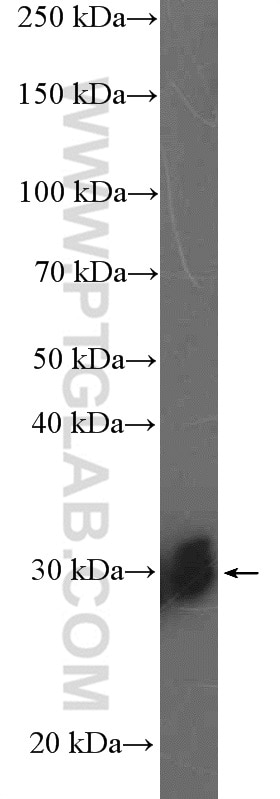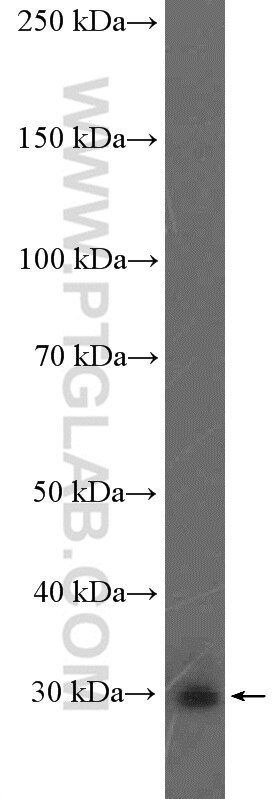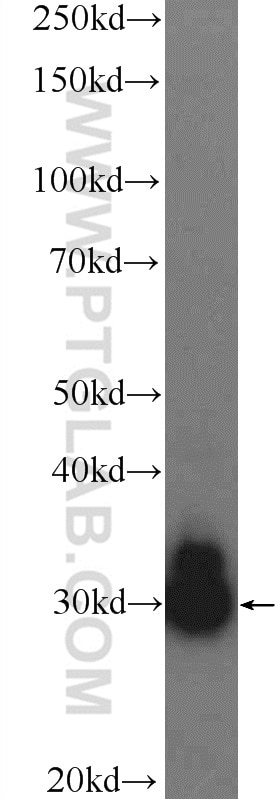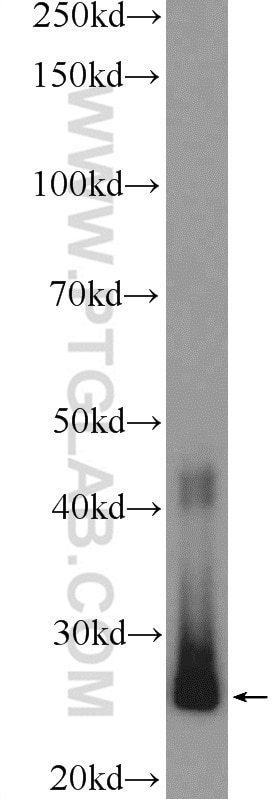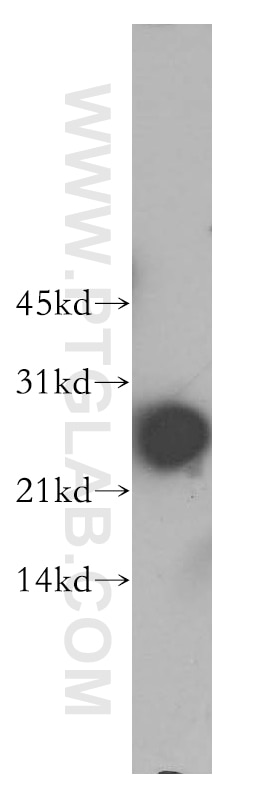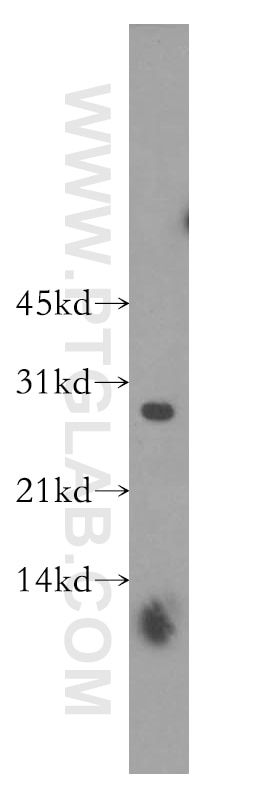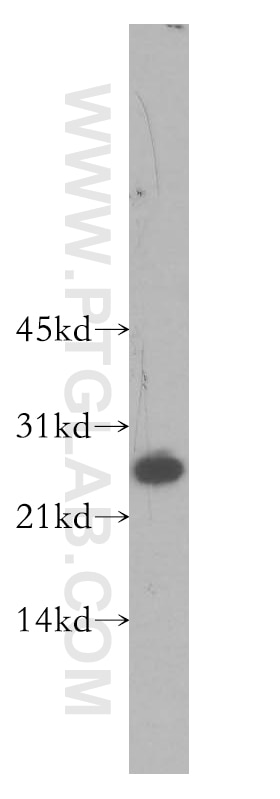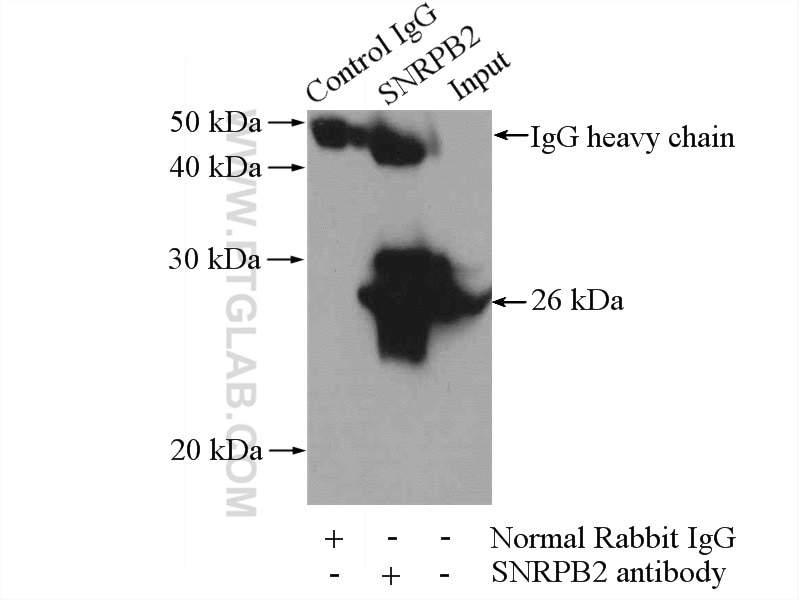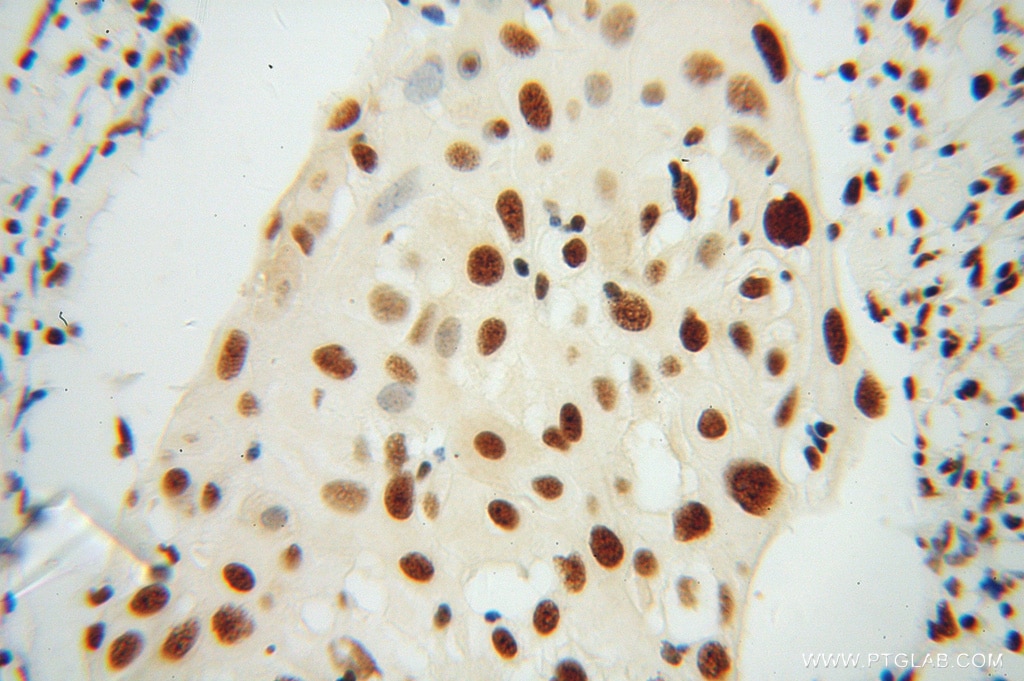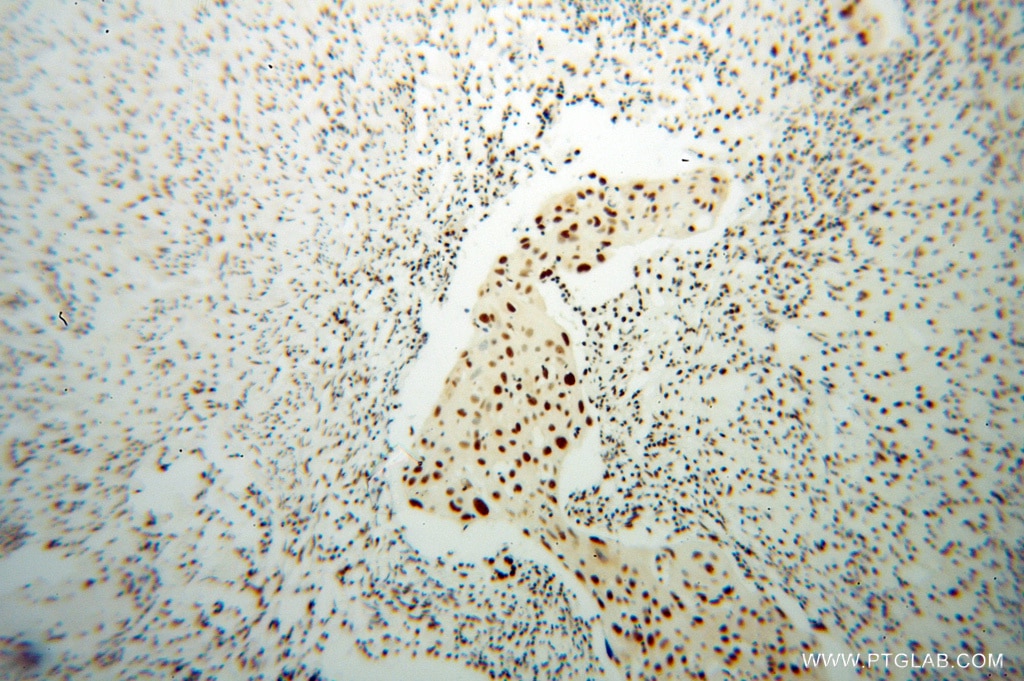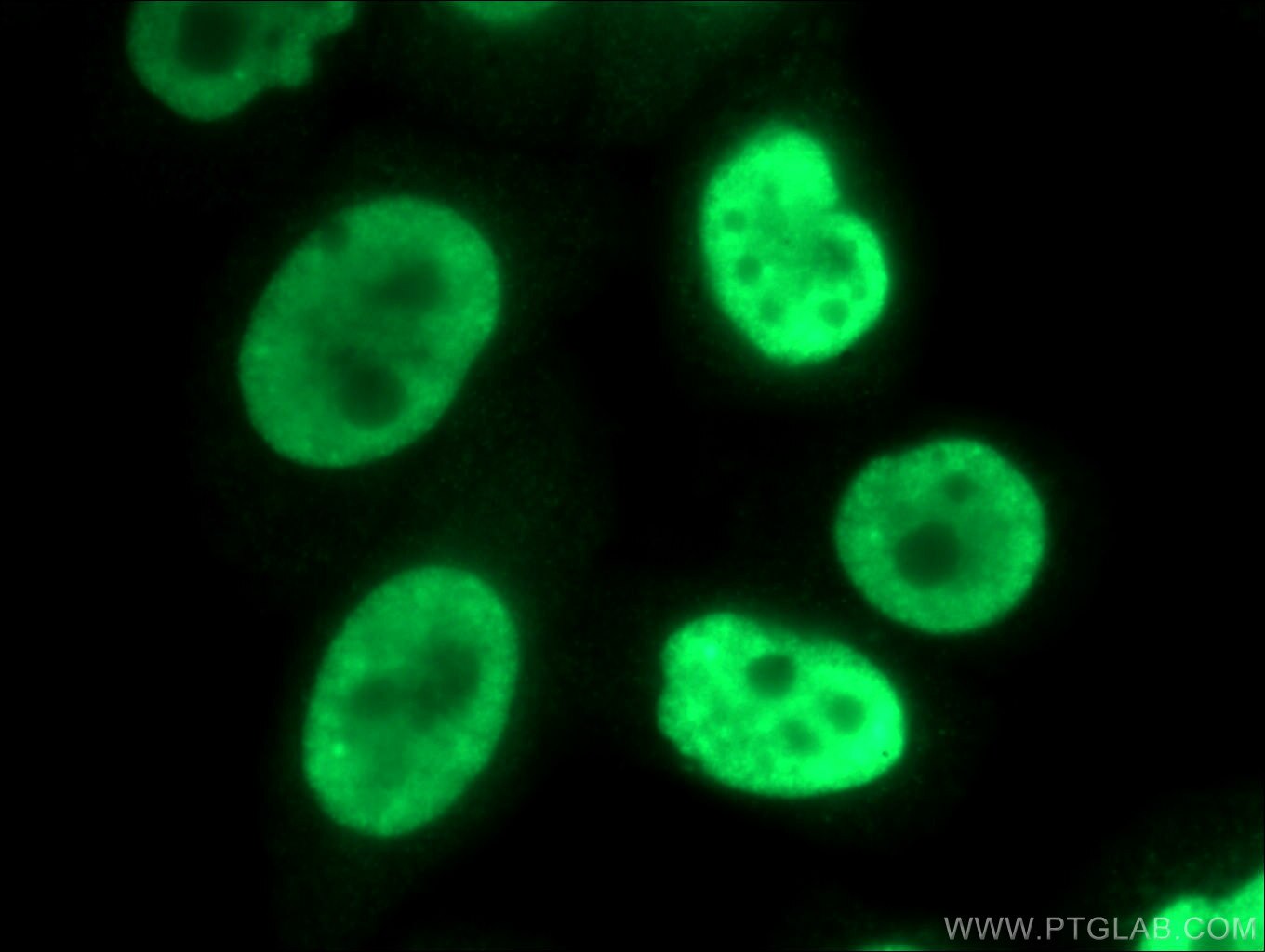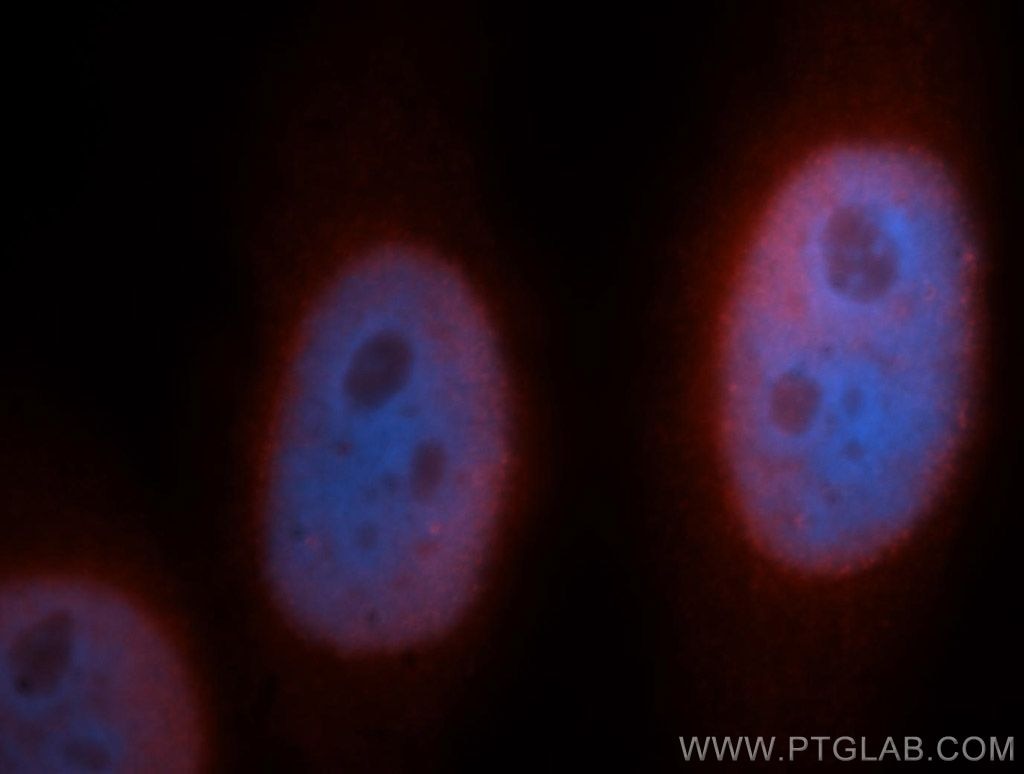- Featured Product
- KD/KO Validated
SNRPB2 Polyklonaler Antikörper
SNRPB2 Polyklonal Antikörper für WB, IHC, IF/ICC, IP, ELISA
Wirt / Isotyp
Kaninchen / IgG
Getestete Reaktivität
human, Maus, Ratte
Anwendung
WB, IHC, IF/ICC, IP, RIP, ELISA
Konjugation
Unkonjugiert
Kat-Nr. : 13512-1-AP
Synonyme
Geprüfte Anwendungen
| Erfolgreiche Detektion in WB | HeLa-Zellen, humanes Hirngewebe, humanes Nierengewebe, humanes Lebergewebe, Mauslebergewebe, Mauslungengewebe |
| Erfolgreiche IP | Mauslebergewebe |
| Erfolgreiche Detektion in IHC | humanes Zervixkarzinomgewebe Hinweis: Antigendemaskierung mit TE-Puffer pH 9,0 empfohlen. (*) Wahlweise kann die Antigendemaskierung auch mit Citratpuffer pH 6,0 erfolgen. |
| Erfolgreiche Detektion in IF/ICC | HeLa-Zellen |
Empfohlene Verdünnung
| Anwendung | Verdünnung |
|---|---|
| Western Blot (WB) | WB : 1:1000-1:4000 |
| Immunpräzipitation (IP) | IP : 0.5-4.0 ug for 1.0-3.0 mg of total protein lysate |
| Immunhistochemie (IHC) | IHC : 1:20-1:200 |
| Immunfluoreszenz (IF)/ICC | IF/ICC : 1:50-1:500 |
| It is recommended that this reagent should be titrated in each testing system to obtain optimal results. | |
| Sample-dependent, check data in validation data gallery | |
Veröffentlichte Anwendungen
| KD/KO | See 2 publications below |
| WB | See 9 publications below |
| IHC | See 3 publications below |
| IF | See 3 publications below |
| IP | See 1 publications below |
| RIP | See 1 publications below |
Produktinformation
13512-1-AP bindet in WB, IHC, IF/ICC, IP, RIP, ELISA SNRPB2 und zeigt Reaktivität mit human, Maus, Ratten
| Getestete Reaktivität | human, Maus, Ratte |
| In Publikationen genannte Reaktivität | human, Maus |
| Wirt / Isotyp | Kaninchen / IgG |
| Klonalität | Polyklonal |
| Typ | Antikörper |
| Immunogen | SNRPB2 fusion protein Ag4436 |
| Vollständiger Name | small nuclear ribonucleoprotein polypeptide B'' |
| Berechnetes Molekulargewicht | 225 aa, 26, 5 kDa |
| Beobachtetes Molekulargewicht | 25-31 kDa |
| GenBank-Zugangsnummer | BC036737 |
| Gene symbol | SNRPB2 |
| Gene ID (NCBI) | 6629 |
| Konjugation | Unkonjugiert |
| Form | Liquid |
| Reinigungsmethode | Antigen-Affinitätsreinigung |
| Lagerungspuffer | PBS with 0.02% sodium azide and 50% glycerol |
| Lagerungsbedingungen | Bei -20°C lagern. Nach dem Versand ein Jahr lang stabil Aliquotieren ist bei -20oC Lagerung nicht notwendig. 20ul Größen enthalten 0,1% BSA. |
Hintergrundinformationen
U2 small nuclear ribonucleoprotein B''(SNRPB2) is part of the U2 RNP particle, which associated with the branch point of the lariat-shaped intron, in intermediate in the cascade of mRNA precursor splicing event. Only in presence of the U2A' protein, SNRPB2 binds stem loop IV of U2 snRNA.
Protokolle
| PRODUKTSPEZIFISCHE PROTOKOLLE | |
|---|---|
| WB protocol for SNRPB2 antibody 13512-1-AP | Protokoll herunterladen |
| IHC protocol for SNRPB2 antibody 13512-1-AP | Protokoll herunterladenl |
| IF protocol for SNRPB2 antibody 13512-1-AP | Protokoll herunterladen |
| IP protocol for SNRPB2 antibody 13512-1-AP | Protokoll herunterladen |
| STANDARD-PROTOKOLLE | |
|---|---|
| Klicken Sie hier, um unsere Standardprotokolle anzuzeigen |
Publikationen
| Species | Application | Title |
|---|---|---|
Sci Transl Med Comment on "Drug screening for ALS using patient-specific induced pluripotent stem cells". | ||
Sci Transl Med Drug screening for ALS using patient-specific induced pluripotent stem cells. | ||
Nucleic Acids Res Stoichiometries of U2AF35, U2AF65 and U2 snRNP reveal new early spliceosome assembly pathways. | ||
Cell Chem Biol Novel RNA-Affinity Proteogenomics Dissects Tumor Heterogeneity for Revealing Personalized Markers in Precision Prognosis of Cancer. | ||
STAR Protoc Protocol for proteogenomic dissection of intronic splicing enhancer interactome for prediction of individualized cancer prognosis. |
Rezensionen
The reviews below have been submitted by verified Proteintech customers who received an incentive for providing their feedback.
FH Melissa (Verified Customer) (03-16-2020) | This antibody works incredibly robust in western blot analysis. However, we do observe a non-specific band in all of our blots which we have attributed to snRPA due to the size and sequence similarity of the immunogen.
|
FH John (Verified Customer) (12-06-2018) |
 |
